This article is intended to give an overview of telecommunications in the Netherlands.

Edam is a city in the northwest Netherlands, in the province of North Holland. Combined with Volendam, Edam forms the municipality of Edam-Volendam. Approximately 7,380 people live in Edam. The entire municipality of Edam-Volendam has 28,492 inhabitants. The name Edam originates from a dam on the little river E or IJe where the first settlement was located and which was therefore called IJedam.

Alkmaar is a city and municipality in the Netherlands, located in the province of North Holland. Alkmaar is well known for its traditional cheese market. For tourists, it is a popular cultural destination. The municipality has a population of 111,766 as of 2023.

Gouda is a city and municipality in the west of the Netherlands, between Rotterdam and Utrecht, in the province of South Holland. Gouda has a population of 75,000 and is famous for its Gouda cheese, stroopwafels, many grachten, smoking pipes, and its 15th-century city hall. Its array of historic churches and other buildings makes it a very popular day-trip destination.
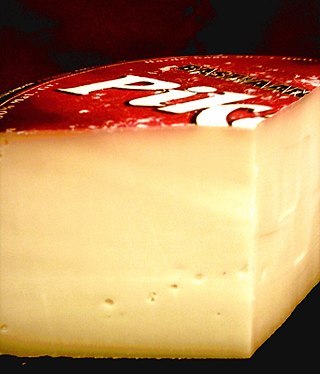
Gouda cheese is a creamy, yellow cow's milk cheese originating from the Netherlands. It is one of the most popular and produced cheeses worldwide. The name is used today as a general term for numerous similar cheeses produced in the traditional Dutch manner.

Customs and regulations for shopping hours vary between countries and between cities.

Nederlandse Spoorwegen is the principal passenger railway operator in the Netherlands. It is a Dutch state-owned company founded in 1938. The Dutch rail network is the busiest in the European Union, and the third busiest in the world after Switzerland and Japan.
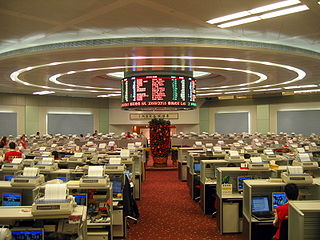
The Stock Exchange of Hong Kong is a stock exchange based in Hong Kong. It is one of the largest stock exchanges in Asia and the 9th largest globally by market capitalization as of August 2024. The exchange plays a crucial role in connecting international investors with mainland Chinese companies, serving as a major platform for capital raising. Unlike mainland Chinese exchanges, it operates under Hong Kong’s distinct regulatory framework, which allows greater access to foreign investors.

Dutch cuisine is formed from the cooking traditions and practices of the Netherlands. The country's cuisine is shaped by its location on the fertile Rhine–Meuse–Scheldt delta at the North Sea, giving rise to fishing, farming, and overseas trade. Due to the availability of water and flat grassland, the Dutch diet contains many dairy products such as butter and cheese. The court of the Burgundian Netherlands enriched the cuisine of the elite in the Low Countries in the 15th and 16th century, so did in the 17th and 18th century colonial trade, when the Dutch ruled the spice trade, played a pivotal role in the global spread of coffee, and started the modern era of chocolate, by developing the Dutch process chocolate.
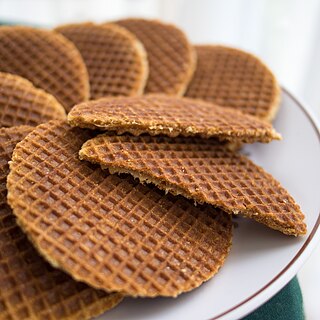
A stroopwafel is a thin, round cookie made from two layers of sweet baked dough held together by syrup filling. First made in the city of Gouda in South Holland, stroopwafels are a well-known Dutch treat popular throughout the Netherlands and abroad.

A weighhouse or weighing house is a public building at or within which goods are weighed. Most of these buildings were built before 1800, prior to the establishment of international standards for weights, and were often a large and representative structures, situated near the market square, town hall, and prominent sacred buildings in town centre.
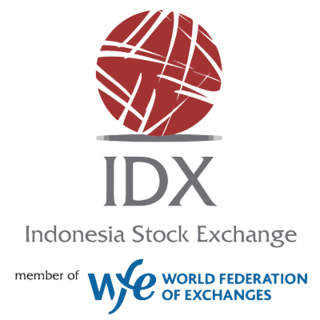
Indonesia Stock Exchange (IDX) is a stock exchange based in Jakarta, Indonesia. It was previously known as the Jakarta Stock Exchange (JSX) before its name changed in 2007 after merging with the Surabaya Stock Exchange (SSX). In recent years, the Indonesian Stock Exchange has seen the fastest membership growth in Asia. As of December 2024, the Indonesia Stock Exchange had 943 listed companies, and total number of investors has already grown to 14.8 million. Indonesia Market Capitalization accounted for 45.2% of its nominal GDP in December 2020. Founded on 30 November 2007, it is ASEAN's largest market capitalization at US$881 billion as of 19 September 2024.

The Großmarkthalle München is a German-international wholesale market located in the Munich borough of Sendling. In an area of 310,000 m2, 270 importing companies and wholesalers offer 140 different product classes from 83 countries with a sales volume of more than 750 million Euro. Additionally there are 65 horticultural producers, 45 florists and 15 wholesalers of miscellaneous lines. The market's geographical sales area is virtually "boundless“: day after day it supplies a region with approximately 5 million people and delivers goods to almost every European country.
Q 100.7 FM is a radio station in Barbados. It was launched on Monday 3rd May 2004 as Quality FM. The station airs mainly talk shows as well as a number of features previously broadcast by its sister station CBC 94.7 CBC 900 AM. Q 100.7 FM is marketed as the "Quality Talk, Quality Music" station.
National Stock Exchange of Australia (NSX) is a stock exchange based in Sydney, New South Wales, Australia. It is owned and operated by NSX Limited, which is listed on the Australian Securities Exchange on 13 January 2005. On 20 December 2006 the Newcastle Stock Exchange formally sought approval and was granted a change of name by the minister to National Stock Exchange of Australia and still trades by the acronym of "NSX".
Winchester Cheese Company was an artisan cheese producer in the town of Winchester, California in Riverside County, Southern California.
Maaslander is a brand name for a Gouda, semihard cheese from the family Westland aka Westland Cheese Specialties BV, located at Huizen, the Netherlands. Maaslander is one of the first Dutch cheese brands, and it is a protected designation of origin. Including the green and yellow stripes, and also the name lander.

The Waag building is a National monument (Rijksmonument) listed building on the Waagplein in Alkmaar in the Netherlands. On this square Waagplein every Friday from April till the second week of September, the famous cheese market is held. The Dutch Cheese Museum and the tourist information Office (VVV) are also in the building. In the tower is a famous carillon weekly played by a carillonneur and also automatically by a drum chiming the quarters of the hour. There is also the famous automatic horse with knights play in the tower with an automatic trumpetplayer.

Beemster cheese is a hard, Dutch cow's milk cheese. Production of Beemster is similar to other hard cheeses such as Gouda. The specific taste of Beemster stems from the ingredients, that part of the production process is done by hand, and that the cheeses are ripened in changing conditions.
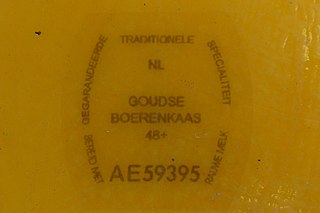
Boerenkaas is a Dutch cheese, most of which is handmade from raw milk. The milk may be from cows, goats, sheep or buffalo; at least half of it must be from the farm where the cheese is made. The cheese may also contain cumin or other seeds, herbs, and spices.















